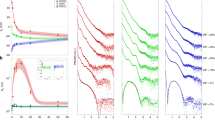Abstract
Purpose. We have previously reported that GMl exhibits an opposite effect on regulating liposome circulation time in mice and rats (Liu et al. Pharm. Res. Vol. 12:508-512 (1995)). Inclusion of GM1 into liposomes significantly prolongs liposome circulation time in mice, while it dramatically decreases the blood half life and increases liver uptake of liposomes in rats. The purpose of this study was to elucidate the mechanism that underlies this phenomenon.
Methods. Single-pass liver perfusion in vitro and complement mediated liposome lysis assay was used.
Results. Serum appeared to play an important role in determining the liver uptake of GMl liposomes. Specifically, rat serum enhanced the uptake of GM1 containing liposomes by the perfused liver. Such activity was also found in human and bovine serum, but not in mouse serum. Taking human serum as an example, we demonstrated that such serum activity can be blocked by EDTA and EGTA/Mg2 +. Antibodies against human IgM and the third component of complement system (C3) also inhibited serum activity.
Conclusions. The presence of naturally occurring anti-GM1 antibodies in rats, through the activation of the classic pathway of complement system, is likely the cause of rapid blood clearance of GM1 liposomes. The third component of complement is likely to serve as the opsonin that is directly involved in mediating liposome clearance.
Similar content being viewed by others
REFERENCES
G. Gregoriadis. Liposomes as Drug Carriers: Recent Trends and Progress. John Wiley & Sons, New York, 1988.
A. Gabison, and D. Papahadjopoulos. Liposome formulations with prolonged circulation time in blood and enhanced uptake by tumors. Proc. Natl. Acad. Sci. USA. 85:6949–6953 (1988).
T.M. Allen, and A. Chonn. Large unilamellar liposomes with low uptake into the reticuloendothelial system. FEBS Lett. 223:42–46 (1987).
A.L. Klibanov, K. Maruyama, V.P. Torchilin, and L. Huang. Amphipathic polyethyleneglycols effectively prolong the circulation time of liposome. FEBS Lett. 268:235–237 (1990).
V.P. Torchilin, M.I. Shtilman, V.S. Trubstskoy, K. Whiteman, and A.M. Milstein. Amphiphilic vinyl polymers effectively prolong liposome circulation time in vivo. Biochim. Biophys. Acta 1195:181–184 (1994).
T.M. Allen. Long-circulating (sterically stabilized) liposomes for targeted drug delivery. Trends Pharmacol. Sci. 15:215–220 (1994).
D. Liu, A. Mori, and L. Huang. Role of liposome size and RES blockade in controlling biodistribution and tumor uptake of GM1-containing liposomes. Biochim. Biophys. Acta 1104:95–101 (1992).
K. Maruyama, S. Unezaki, N. Takahashi, and M. Iwatsuru. Enhanced delivery of doxorubicin to tumor by long-circulating thermosensitive liposomes and local hyperthermia. Biochim. Biophys. Acta 1149:209–216 (1993).
D. Liu, F. Liu, and Y.K. Song. Monosialoganglioside GM1 shortens the blood circulation time of liposomes in rats. Pharm. Res. 12:508–512 (1995).
A. Johnstone, and R. Thorpe. Immunochemistry in practice. Blackwell Scientific Publications, Oxford, 1982, pp. 56–59.
M.J. Hope, R. Nayar, L.D. Mayar, and P.R. Cullis. Reduction of Liposome size and preparation of unilamellar vesicles by extrusion techniques. In G. Gregoriadis Liposome Technology 2nd ed. CRC press, Boca Raton, FL, 1993, pp. 123–139.
T. Yasuda, Y. Naito, T. Tsumita, and T. Tadakuma. A simple method to measure anti-glycolipid antibody by using complement-mediated immune lysis of fluorescent dye-trapped liposomes. J. Immunol. Methods 44:153–158 (1981).
H. Kiwada, S. Obara, and H. Nishiwaka. Studies on the uptake mechanism of liposomes by perfused rat liver. I. an investigation of effluent profile with perfusate containing no blood component. Chem. Pharm. Bull. 34:1249–1256 (1986).
H. Harashima, K. Sakata, K. Funato, and H. Kiwada. Enhanced hepatic uptake of liposomes through complement activation depending on the size of liposomes. Pharm. Res. 11:402–406 (1994).
G.H. Strejan, K. Essani, and D. Surlan. Naturally occurring antibodies to liposomes. II. Specificity and electrophoretic pattern of rabbit antibodies reacting sphingomyelin-containing liposomes. J. Immunol. 127:160–165 (1981).
S. Kaise, T. Yasuda, R. Nishimaki, S. Watarai, and T. Tsumita. Antiglycolipid antibodies in normal and pathologic human sera and synovial fluids. Vox Sang. 49:292–300 (1985).
N.M. Wassef, S.H. Johnson, G.M. Graeber, G.M. Swartz Jr., C.L. Schultz, J.R. Hailey, A.J. Johnson, D.G. Tayor, R.L. Ridgway, and C.R. Alving. Anaphylactoid reactions mediated by autoantibodies to cholesterol in miniature pigs. J. Immunol. 143:2990–2995 (1989).
Author information
Authors and Affiliations
Rights and permissions
About this article
Cite this article
Liu, D., Song, Y.K. & Liu, F. Antibody Dependent, Complement Mediated Liver Uptake of Liposomes Containing GM1 . Pharm Res 12, 1775–1780 (1995). https://doi.org/10.1023/A:1016286310475
Issue Date:
DOI: https://doi.org/10.1023/A:1016286310475



